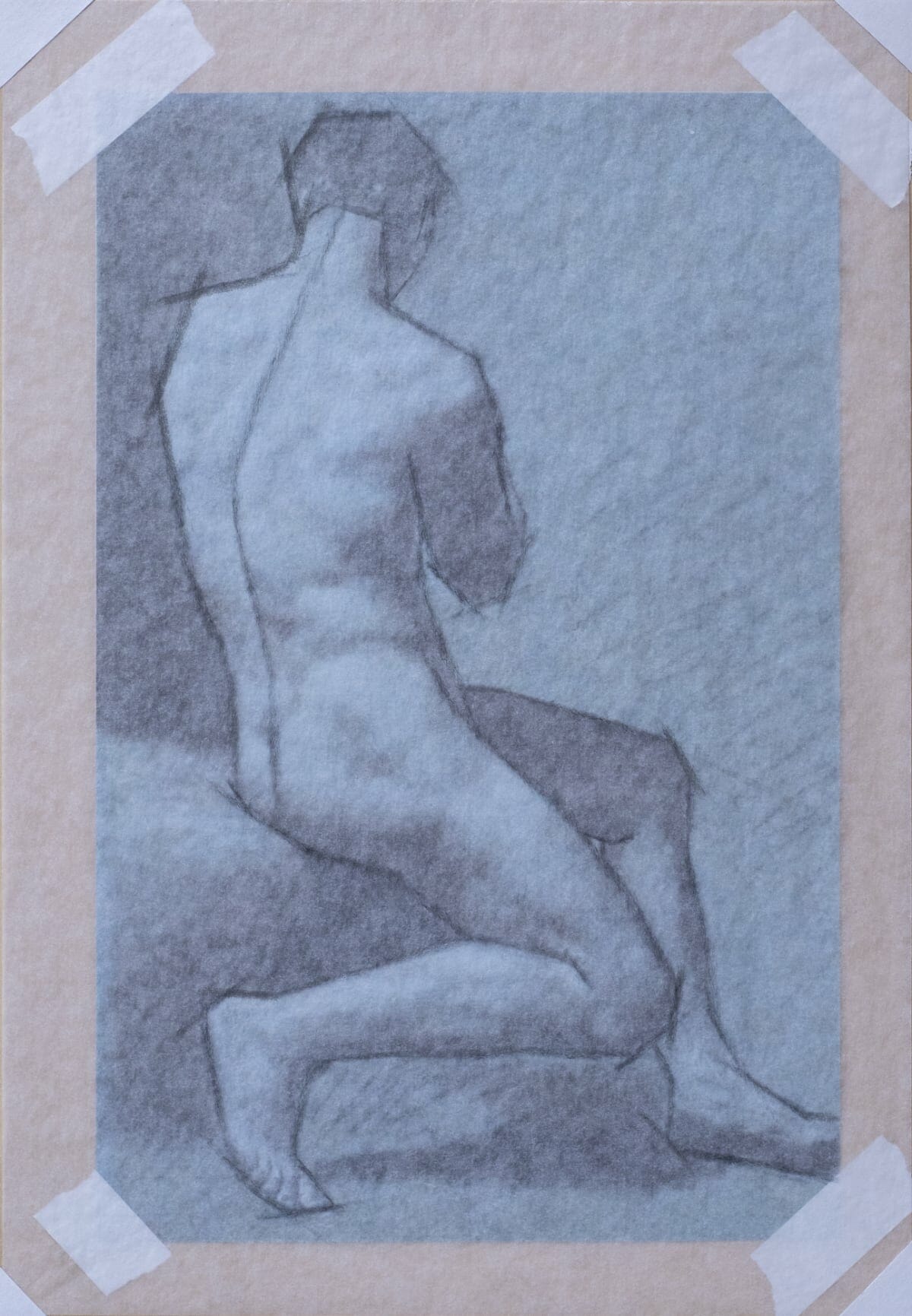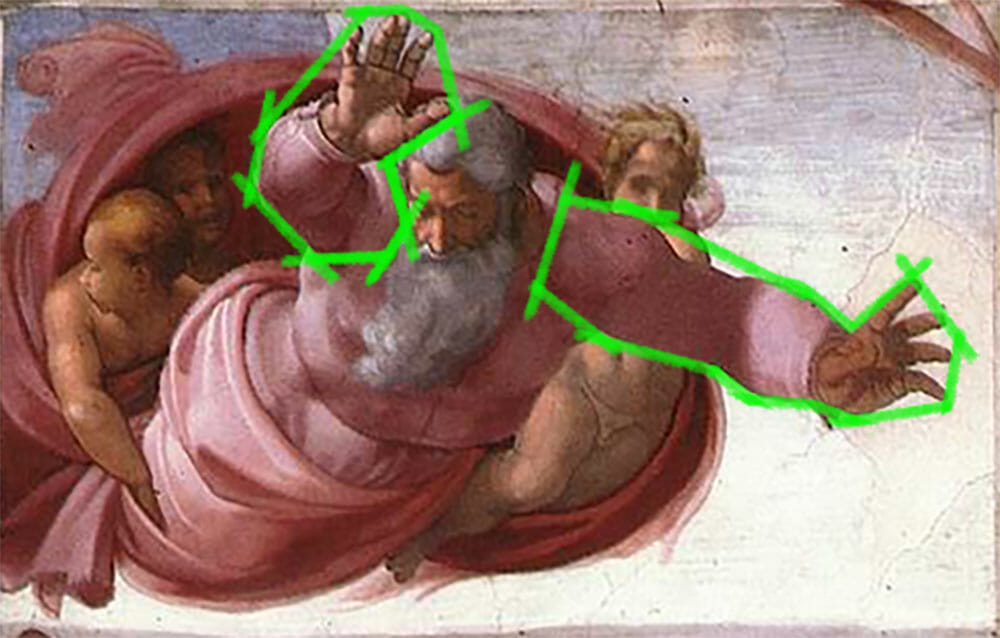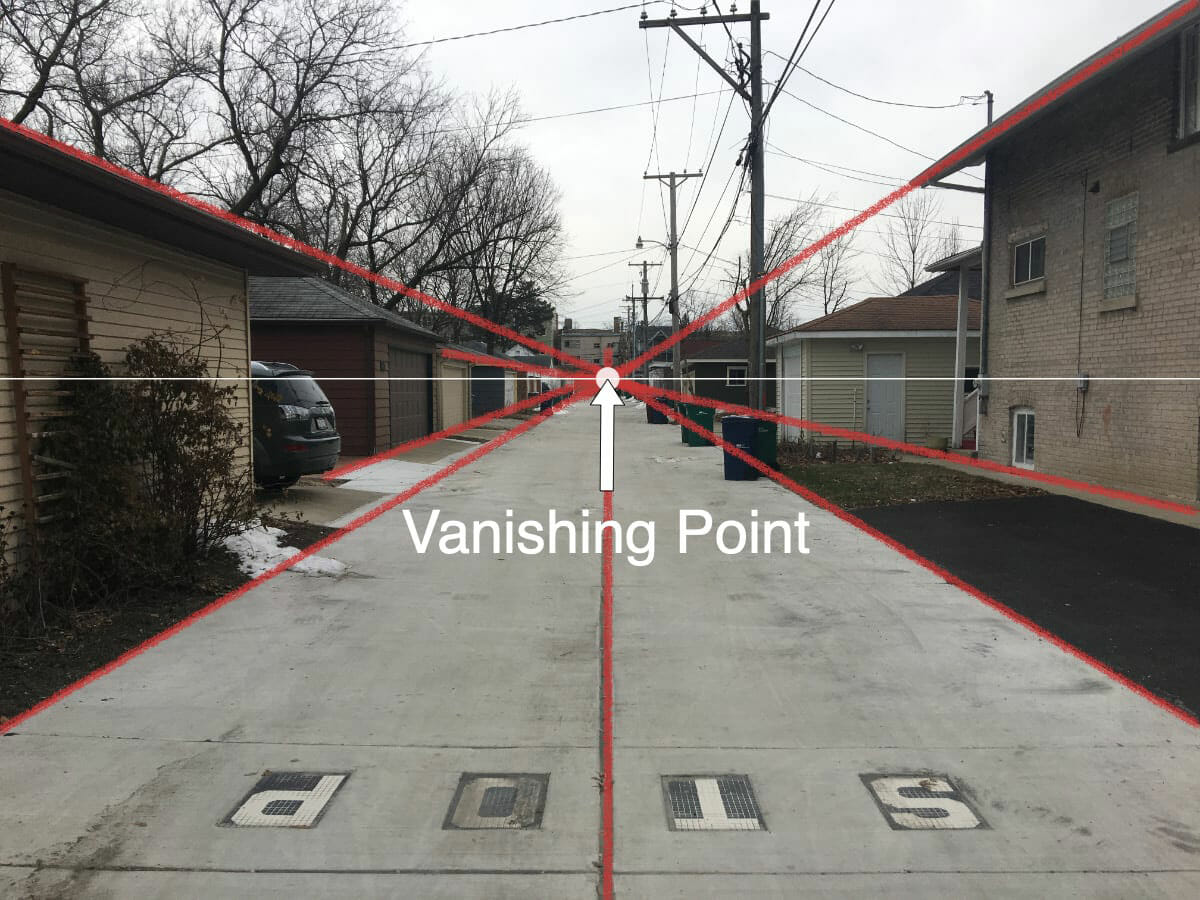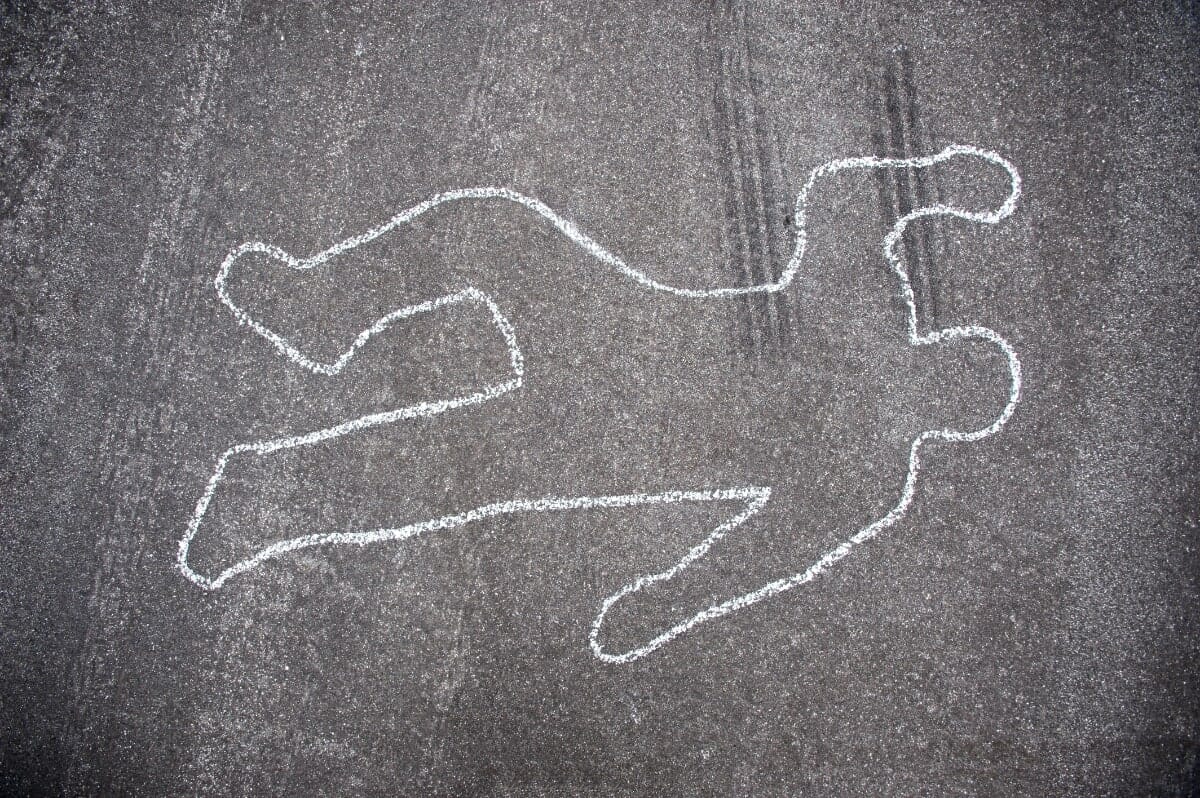Cool Drawings That You Can Trace
Tin tracing help y'all develop your drawing skills?
Learning to draw well is difficult. Information technology tin take years of practice and good instruction and even then, at that place are no guarantees. We make sure our students understand this earlier they brainstorm learning with u.s.a., and virtually are eager to have the challenge. Just one time in a while, someone will point out an obvious alternative. It usually goes something like this:
"Omg, why don't yous just trace a photo instead? That's what I practise, and it's way easier! Lol!"
Information technology's like shooting fish in a barrel to dismiss this kind of response as naive or just somebody trolling. But if yous're interested in drawing by observation without tracing, it's a question y'all should be able to answer. If cartoon is so difficult, why non just trace?
This is non a new question. Information technology's been speculated that artists throughout history, including Norman Rockwell, Thomas Eakins, Johannes Vermeer, and fifty-fifty artists from equally far back as the 1400s, have incorporated tracing into their drawing process. These artists used lens devices to help them better understand and capture what they saw, yielding some of the globe'southward not bad masterpieces. Today, the exercise of tracing photographs has proliferated throughout the representational art world every bit a quick and user-friendly alternative to the challenges of drawing well.
So, if lots of artists are doing it, and have been for centuries, can tracing really be that bad?
If y'all're familiar with what we practice hither at Vitruvian Studio, you already know that nosotros adopt to draw past straight observation informed by measurement, without the aid of tracing or grids. There are, however, some legitimate uses of tracing when learning to describe, if only in a few specific contexts. In this post, we'll tackle the tracing event head-on, and wait at the pros and cons of tracing every bit a learning tool. Can tracing exist used to teach you the fundamentals of drawing or will it prevent you from reaching your full potential? You be the approximate.
What Can You Larn About Drawing By Tracing?
Do good #1: Tracing Can Assistance You Get Accustomed to Cartoon Processes and Materials
If you're only starting to learn, the human activity of drawing can seem overwhelming. Something as simple as belongings a pencil and moving information technology appropriately on the folio tin can be hard and frustrating. Tracing an paradigm can aid you focus on the physical demands of drawing without worrying about whether you're getting it right. Information technology can aid you develop paw-heart coordination and muscle memory that are important for controlling the materials of drawing. Information technology's similar a kind of rehearsal for your future drawing development.
This kind of exercise is likewise useful for learning to make decisions in the first stage of drawing. Nosotros typically begin by "blocking-in" the major masses of the subject with simplified, straight-sided shapes. Students sometimes struggle with this concept. Typically, we try to include besides much detail early on. Tracing references is a convenient, inexpensive way to practice blocking-in. By tracing along the longest, broadest sweeps of the contour, you can larn what to ignore when establishing the biggest shapes.
It's important, yet, to apply the pencil in the same way that yous will when you're not tracing. When drawing "freehand", we tend to first with low-cal, soft and temporary lines while we go our bearings. Tracings, still, tend to yield a sharper, harder and continuous line that results in a flat and cartoonish await. If y'all trace to get used to the act of drawing, try to do it every bit if you're not tracing.

Benefit #2: Tracing Tin can Aid You Understand Beefcake and Construction
An instructor at the New York Academy of Art would onetime prescribe a tracing practice. For those of u.s. struggling to draw the effigy, he would photocopy a main drawing and tell us to trace it. He told u.s. to pay particular attention to the curvature of the profile. Observe where it is more rounded, where it is flatter, and where it overlaps other contours. Consider the anatomy of the figure while you do this and try to sympathize why the contour changes the way it does. Fifty-fifty draw the bones and muscles and endeavour to relate them to what'south happening on the surface. And so, in one case the tracing is complete, describe the figure again – merely freehand this time, and at a larger scale.
This exercise packs a 1-two punch. Tracing an example helps you learn about how a master artist represented the human being effigy. It focuses your attention in a way that but looking doesn't quite accomplish. It'southward the visual equivalent of reading aloud while studying for a test. Reproducing that drawing at a larger scale provides an opportunity to practice, and also demands more input from yous. Since a larger drawing will require more description than you can see clearly in the smaller reference, you'll need to improvise a little.
This kind of tracing exercise provides a style of closely studying another artist's work, and squaring it with your own knowledge and ability. It'south an effective mode to discover what you need to work on when learning to describe the effigy from observation, or fifty-fifty from imagination.
Benefit #three: Tracing Can Help You Sympathize Foreshortening

"Foreshortening" is the give-and-take we use to describe how an object looks when viewed on end. For instance, if yous were drawing a figure with an arm stretched out toward you, information technology would announced "foreshortened". We typically struggle with foreshortening considering the outer shape of the object we're drawing is not what nosotros wait. We think of limbs equally being long and skinny and tend to draw them that way, even when they appear quite different in a foreshortened view.
Tracing can be an effective way to study the effects of foreshortening. Attempt cartoon an "envelope", or a rudimentary block-in, on top of existing images of figures in various foreshortened views. Doing so tin starkly illustrate the difference betwixt our expectations (limbs are long and skinny) and what we're actually seeing. This kind of tracing can help free you from your preconceived, and incorrect, assumptions about what figures look like.
Benefit #4: Tracing Tin can Assistance You Understand Linear Perspective

Linear Perspective is a challenging field of study for students learning to draw. It often involves measurement and adding and can seem a petty too much like math. But having at least a basic understanding of how perspective works is important for conveying three-dimensional space in drawings.
Tracing images can be an effective way to explore how vanishing points work in perspective. A "vanishing betoken" is the hypothetical spot where parallel edges receding abroad from the viewer appear to converge. Whatsoever two or more parallel elements in a moving picture that recede back and away from the viewer volition share a mutual vanishing signal. Students are ofttimes skeptical of this principle when drawing from life. Our brains simply aren't wired to notice things like this. Merely tracing on top of a photograph to see where receding parallels intersect tin can provide convincing prove that vanishing points are real and should exist taken seriously when drawing. [bctt tweet="Can tracing teach you lot the fundamentals of drawing or will it prevent you from reaching your total potential?" username="vitruvianstudio"]
The Pitfalls of Tracing
All of these instances show how tracing tin can provide an effective way to learn specific skills or concepts when learning to draw. But as well much tracing can hinder your development. Here are some reasons why:
Pitfall #i: Tracing Doesn't Encourage You to Analyze Your Piece of work
Cartoon well is ultimately about making good decisions. It's about observing your subject carefully, understanding why it looks the manner information technology does and recreating that appearance on the page with an constructive method. A successful drawing is the production of analysis.
Merely tracing is oftentimes done mindlessly, with no analysis at all. Tracing doesn't require you to study your subject or examine your choices. If you're just copying lines, you don't have to enquire questions or solve problems. When y'all trace, do you consider the light source? Do y'all think about where the shadows are? Exercise you think about the underlying structure of your bailiwick? Are y'all thinking about perspective? Do you plan your composition? Do y'all consider alternatives to how the image you're tracing presents the bailiwick? The reply to these questions is normally "no". In other words, when you trace you probably don't truly understand what yous're drawing, or why you're drawing information technology that way. In our opinion, this diminishes the overall drawing feel.
Pitfall #ii: Tracing Can Upshot in Flat Drawings

Paper is flat. Just when drawing observationally, we normally seek to create the illusion of volume and space on the page. In other words, nosotros want our drawings to announced 3-dimensional. Achieving this kind of illusion requires y'all to call back in a particular way about what and how yous're drawing, considering advisedly the diverse three-dimensional characteristics of your subject.
When about people trace, however, information technology normally results in a very flat, cartoonish cartoon. The trend is to trace contours with a continuous, unbroken outline that appears to sit uniformly on the aforementioned plane – like a chalk outline at a crime scene. Even if the shapes are basically right, it can be needlessly hard to brand such a flat-looking drawing appear iii-dimensional and lifelike in the end.
Pitfall #3: Tracing Tin Become a Crutch
Tracing is ane affair, but drawing freehand is something else entirely. Being skilful at one doesn't automatically mean that y'all'll be skilful at the other. If you're not careful, you may discover yourself clinging to tracing because you're afraid to try drawing without it – or perhaps you practice effort, and the results are disappointing, and you get dorsum to what feels better.
But in that location's no need to be afraid of drawing from observation. While learning to draw freehand is challenging, and will definitely push yous out of your comfort zone, information technology will also empower you. Just like any skill, at that place are many modest steps to take along the way, each of which provides its ain reward.
Pitfall #4: Tracing Doesn't Guarantee Good Results Anyway
We alive in a photographic age. Every day, we are bombarded with hundreds of images that are derived from some type of lens device, and we tend to have them equally true. This is a state of mind known every bit beingness "camera conditioned".
Simply photographs aren't truthful. Instead, they misconstrue reality in countless subtle ways. Lens effects, exposure settings, compression artifacts, software biases and more can have a dramatic affect on how any photograph appears to usa. Nonetheless nosotros notwithstanding frequently point to photographs as the ultimate manifestation of accuracy in imagery. "Wow! That drawing looks merely like a photograph!"
Tracing a photo may seem like the quickest route to accuracy in cartoon, but if that's how you approach it, the distortions you fail to discover in your photo reference volition carry over into your artwork. That, combined with the tendency mentioned above to trace simplistically, in a 2-dimensional manner, tin can yield some pretty weird looking results. This can be quite discouraging, especially considering that tracing is supposed to be piece of cake.
Bank check out our Drawing Basics course to acquire your fundamental drawing skill set.
Pitfall #v: Tracing Doesn't Convey Your Unique Point of View
The final argument confronting tracing concerns who is really in control of your artwork. Part of what makes drawing by observation difficult is the sheer number of decisions you lot have to make while developing a drawing from get-go to terminate. The relative success of your work depends to a large extent on how you choose to solve problems equally they ascend.
Only this is also what makes drawing interesting and endlessly variable. Put x master artists in a studio together, all drawing the same affair, and you'll see 10 dissimilar results. Each cartoon volition capture the subject faithfully, and yet each one volition be unique because information technology is the product of an individual mind. Each artist will cull his or her own way to tackle whatsoever given trouble, yielding different results. This is how individuality tin shine through in artwork, even in the context of strict realism.
When you trace your work there is a huge number of decisions that yous don't get to make. Things like scale, placement, proportion, structure, and perspective in your cartoon are all determined by whatever epitome you lot're tracing. With so many decisions made for you lot, yous don't get to find out what your drawing would await like if you were to work those things out for yourself. In this way, tracing is restrictive. Instead of sharing what you see in your own unique way, you're copying another perspective, whether that's the camera or someone else'southward eye.
Drawing by observation is always an deed of revision and editing, correcting and refining. We make our own decisions based on how we perceive the subject and the folio, which in turn creates an intimate view through the artist's centre. It's why we enjoy looking at the diversity of piece of work in museums: to better understand the world those artists occupied, as they saw it, and to experience a kinship, an empathy, and to chronicle to the artist's betoken of view and their place within history.
Our Final Give-and-take on Tracing
While we acknowledge that tracing has its place every bit a learning tool in specific contexts, we encourage you to challenge yourself to acquire to describe without tracing. Beingness able to observe a subject field from life, and make decisions about line, shape, scale, placement, proportion, perspective and curvature is hard… but can also be gratifying. While tracing can be a tool in your toolbox, don't allow it to become the only tool that you utilise.
Over to You
Exercise y'all ever trace when making your work? Why or why not? Allow us know in the comments below.
[content_upgrade cu_id="39863″]Don't forget to download this list of five means tracing can help improve your drawing skills.[content_upgrade_button]Click Here[/content_upgrade_button][/content_upgrade]
Source: https://vitruvianstudio.com/why-learn-to-draw-when-you-can-trace/
0 Response to "Cool Drawings That You Can Trace"
Post a Comment